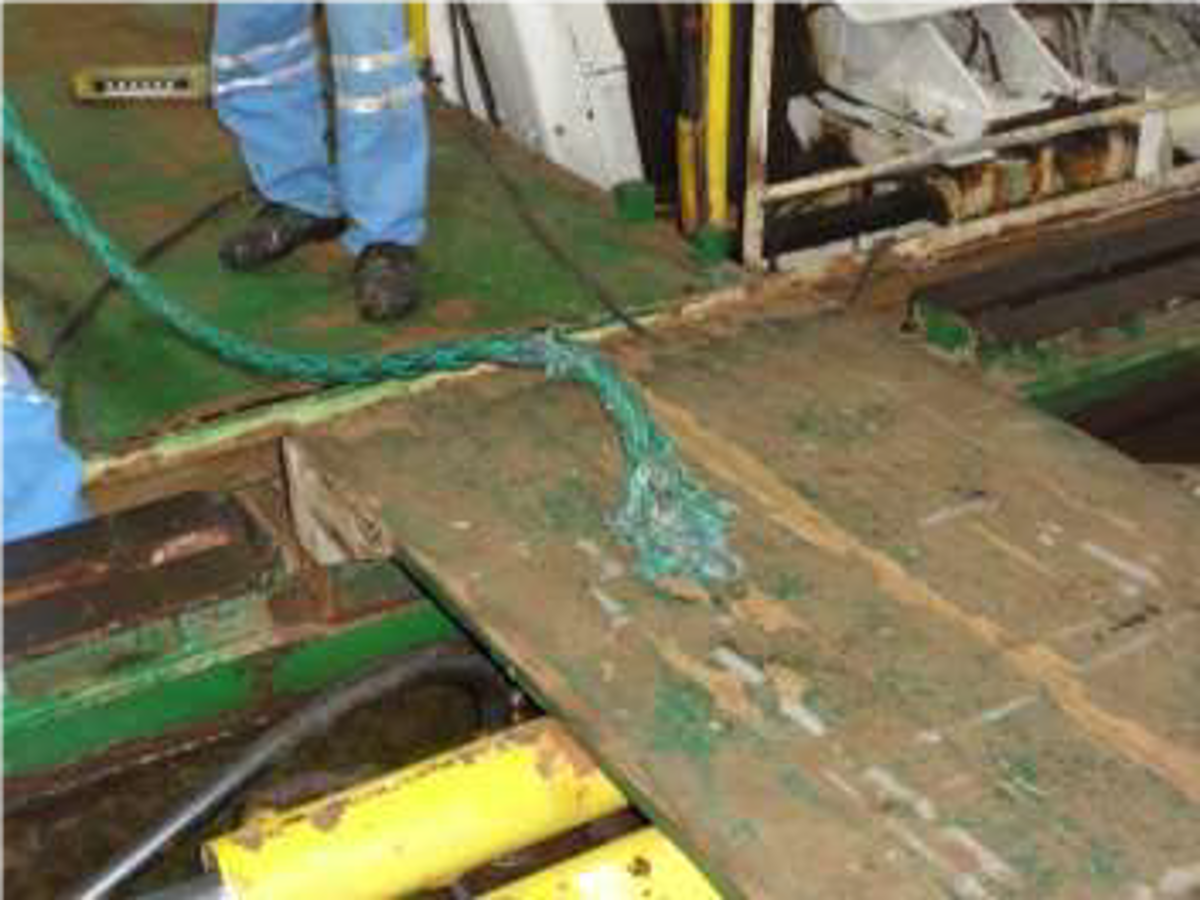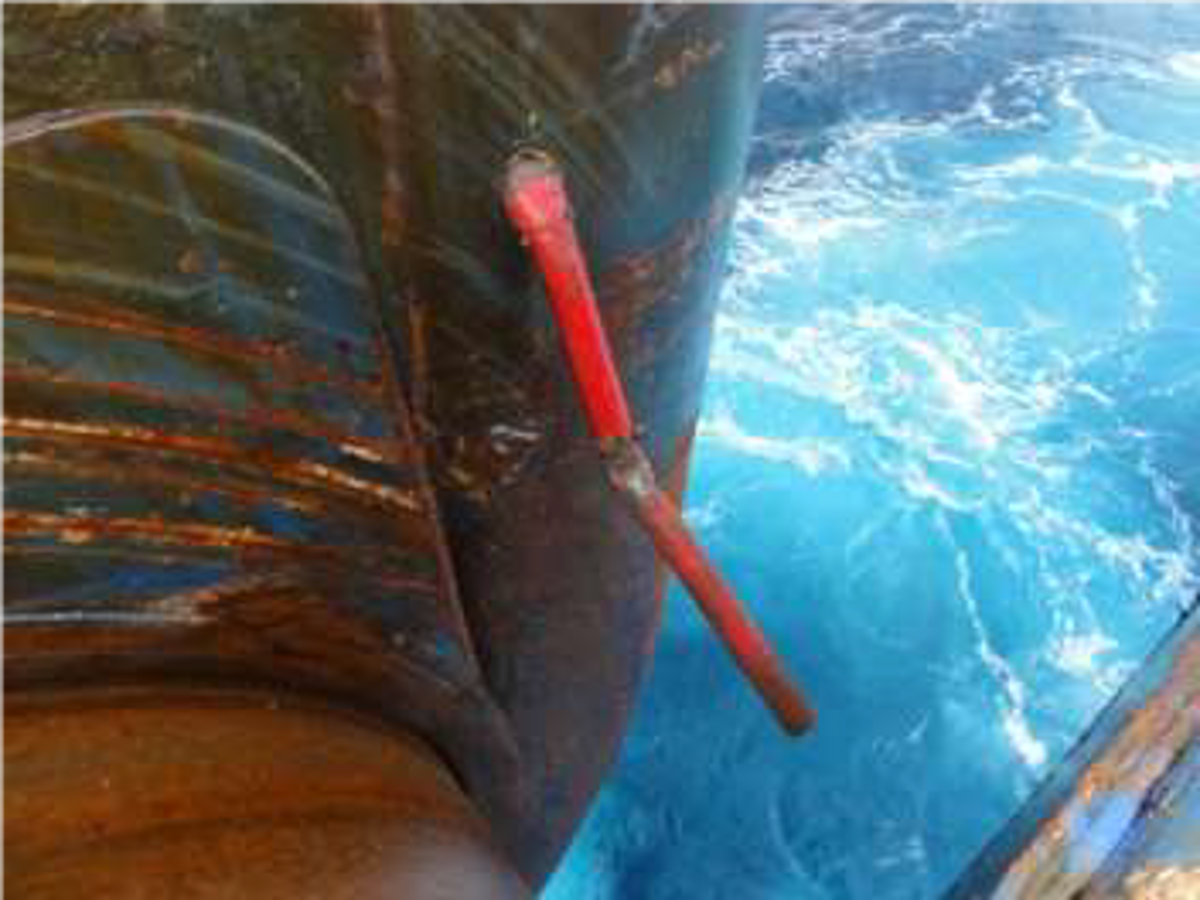Line parting as a result of socket failure during grapnel operations
- Safety Flash
- Published on 12 May 2017
- Generated on 12 July 2025
- IMCA SF 10/17
- 2 minute read
Jump to:
A member has reported an incident in which a line parted during grapnel operations.
What happened?
The incident occurred as grapnels were being recovered during attempts to snag, capture and recover a cable on the seabed.
The end of the rope pulled out of its socket, releasing the rope down the aft deck and overboard. A bar at the stern was damaged and a camera and floodlight were carried overboard.

parted rope on deck

resulting damage to Atlantic bar
Findings
- Higher than expected tensions were experienced during the recovery. At the time of the incident rope tension was observed to be 175 kN.
- During watch handover, the situation regarding high tensions (averaging 130-140 kN) was properly explained.
- The aft deck and “Snap Back Zones” were kept clear as per normal practice.
- The “Atlantic bar” was in place on the stern sheave.
- All ropes had been inspected (as per toolbox talks conducted and recorded) during pay-out and recovery, and there was no sign of excessive degradation to the failed rope or fitting prior to the incident.
- The recovery of the grapnels at higher than expected tensions, handover and safety briefing in unusual operation conditions, and back deck/snap-back zone safety were all handled diligently and professionally.
- The rope failed at less than the minimum breaking load (MBL) of the rope, which was 25.0 tonnes:
- Tensions of up to 200 kN (app. 20 tonnes) had been experienced during the recovery.
- The working load limit (WLL) of the rope would have been 12.5 tonnes (app. 125 kN) which was adequate for the expected tensions (app. 100-120 kN / 10-12 tonnes).
- Tensions of up to 200 kN (app. 20 tonnes) had been experienced during the recovery.
- It is possible that the rope socket had gradually degraded over the previous 10 grapnel drives, but with no obvious visual signs of having done so.
Related safety flashes
-
IMCA SF 06/13
3 May 2013
IMCA Safety Flashes summarise key safety matters and incidents, allowing lessons to be more easily learnt for the benefit of the entire offshore industry.
The effectiveness of the IMCA Safety Flash system depends on the industry sharing information and so avoiding repeat incidents. Incidents are classified according to IOGP's Life Saving Rules.
All information is anonymised or sanitised, as appropriate, and warnings for graphic content included where possible.
IMCA makes every effort to ensure both the accuracy and reliability of the information shared, but is not be liable for any guidance and/or recommendation and/or statement herein contained.
The information contained in this document does not fulfil or replace any individual's or Member's legal, regulatory or other duties or obligations in respect of their operations. Individuals and Members remain solely responsible for the safe, lawful and proper conduct of their operations.
Share your safety incidents with IMCA online. Sign-up to receive Safety Flashes straight to your email.